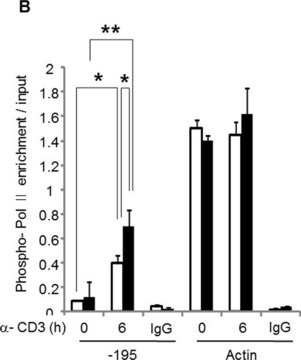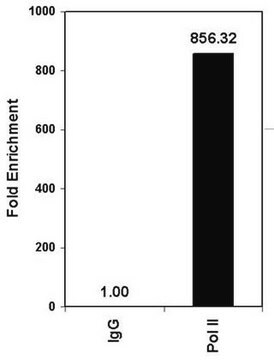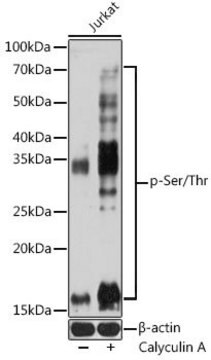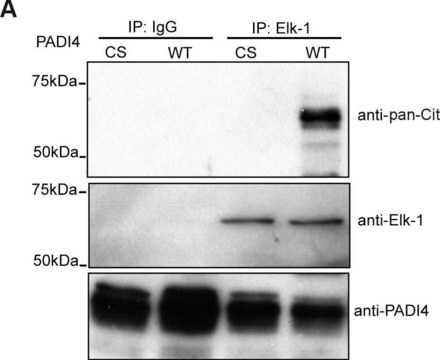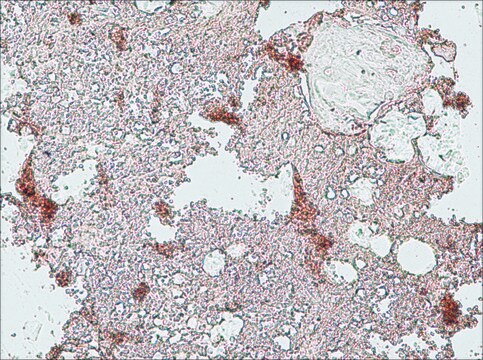SAB4200638
Monoclonal Anti−phospho−RNA polymerase II CTD (pSer5) antibody produced in rat
clone 1H4B6, purified from hybridoma cell culture
Sinónimos:
CCFDN, CTD (carboxy−terminal domain, RNA polymerase II, polypeptide A) phosphatase, CTD of POLR2A, FCP1, POLR2, POLRA, RNA polymerase II subunit A C-terminal domain phosphatase, RPB1, RPBh1, RPO2, RPOL2, RpIILS, TFIIF-associating CTD phosphatase 1, hRPB221, hsRPB1, phosphatase of, subunit 1, polymerase (RNA) II (DNA directed) polypeptide A 220kDa (POLR2A), serine phosphatase FCP1a, subunit 1CTDP1, transcription factor IIF-associating CTD phosphatase 1
About This Item
Productos recomendados
origen biológico
rat
Nivel de calidad
forma del anticuerpo
purified from hybridoma cell culture
tipo de anticuerpo
primary antibodies
clon
1H4B6, monoclonal
mol peso
~250 kDa
reactividad de especies
human, rat, mouse, monkey, canine
concentración
~1 mg/mL
técnicas
immunoblotting: 0.5-1 μg/mL using whole extracts of HeLa cells.
immunofluorescence: 4-8 μg/mL using using HeLa cells.
isotipo
IgG2b
Nº de acceso UniProt
Condiciones de envío
dry ice
temp. de almacenamiento
−20°C
modificación del objetivo postraduccional
phosphorylation (pSer5)
Información sobre el gen
human ... POLR2A(5430)
mouse ... Polr2a(20020)
rat ... Polr2a(363633)
Descripción general
Especificidad
Inmunógeno
Aplicación
Acciones bioquímicas o fisiológicas
Forma física
Almacenamiento y estabilidad
Cláusula de descargo de responsabilidad
¿No encuentra el producto adecuado?
Pruebe nuestro Herramienta de selección de productos.
Código de clase de almacenamiento
10 - Combustible liquids
Clase de riesgo para el agua (WGK)
WGK 1
Punto de inflamabilidad (°F)
Not applicable
Punto de inflamabilidad (°C)
Not applicable
Elija entre una de las versiones más recientes:
Certificados de análisis (COA)
¿No ve la versión correcta?
Si necesita una versión concreta, puede buscar un certificado específico por el número de lote.
¿Ya tiene este producto?
Encuentre la documentación para los productos que ha comprado recientemente en la Biblioteca de documentos.
Nuestro equipo de científicos tiene experiencia en todas las áreas de investigación: Ciencias de la vida, Ciencia de los materiales, Síntesis química, Cromatografía, Analítica y muchas otras.
Póngase en contacto con el Servicio técnico
